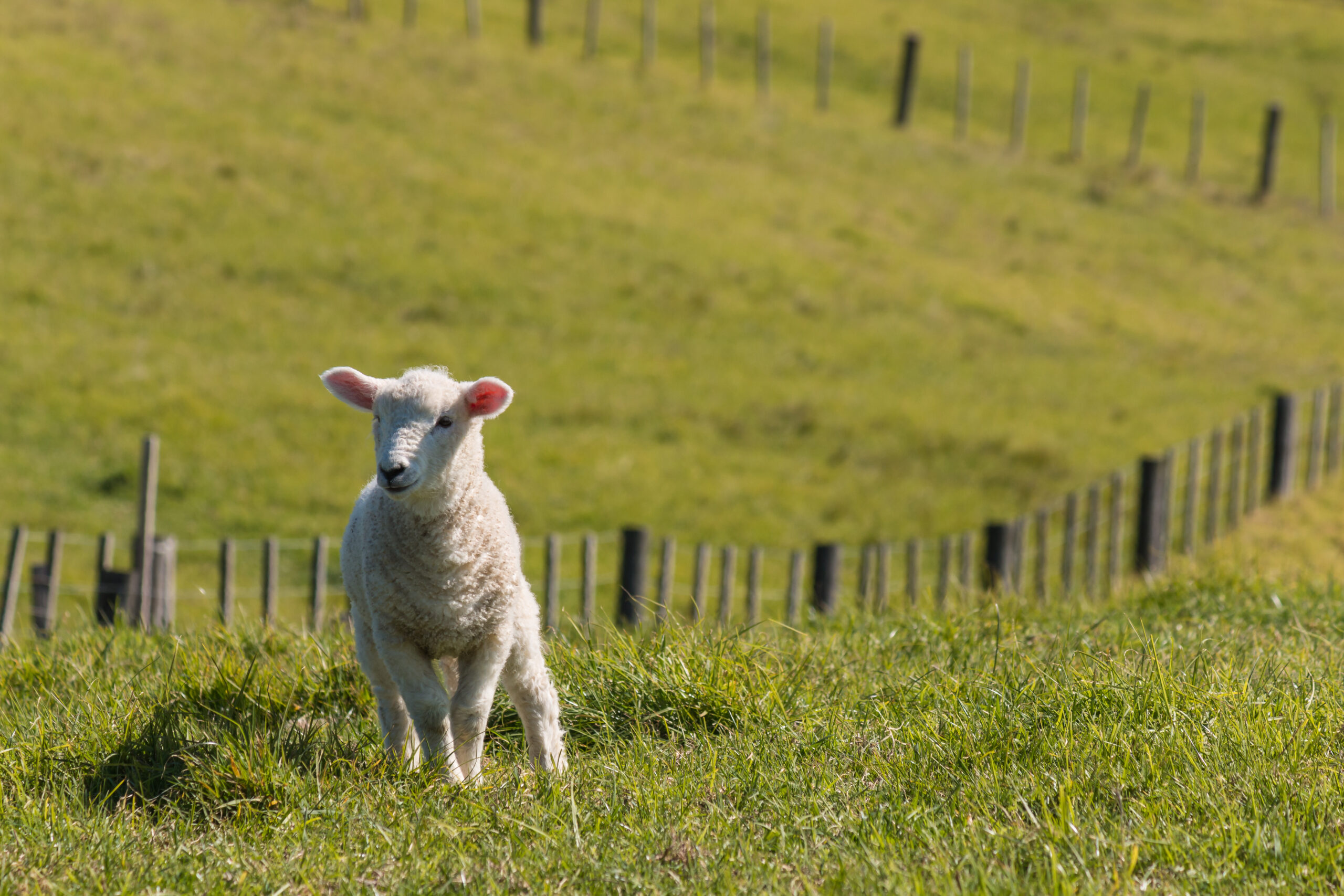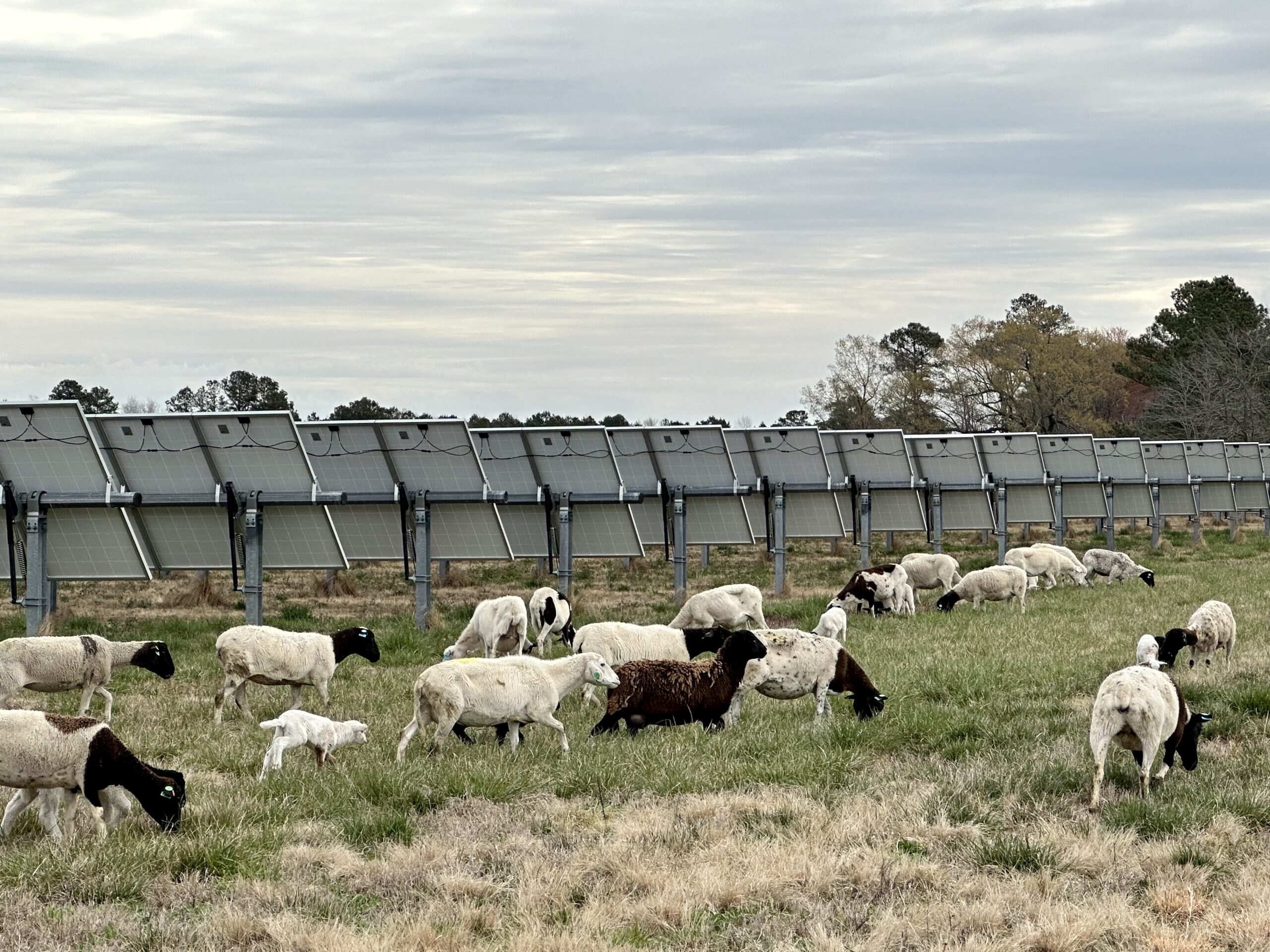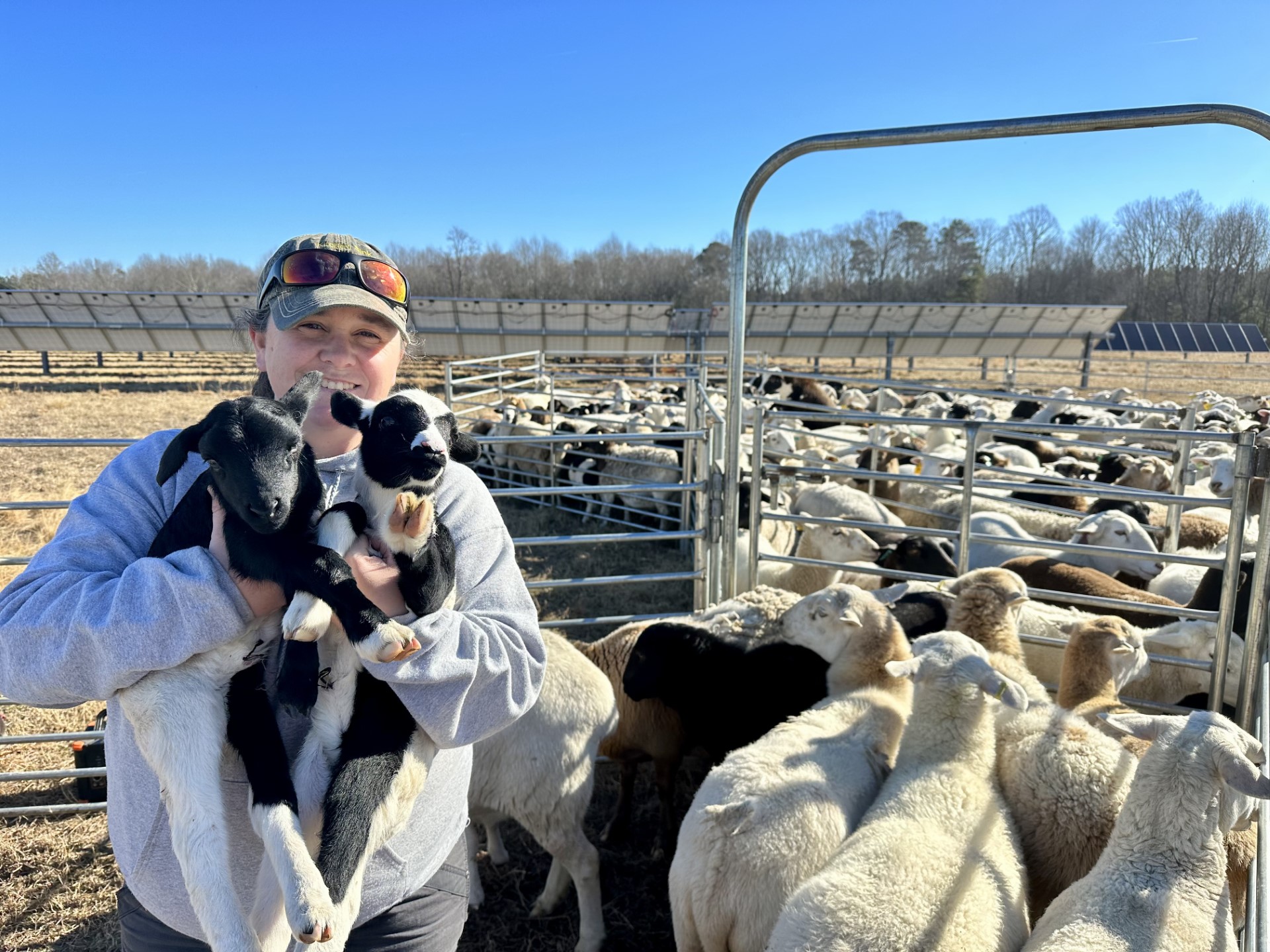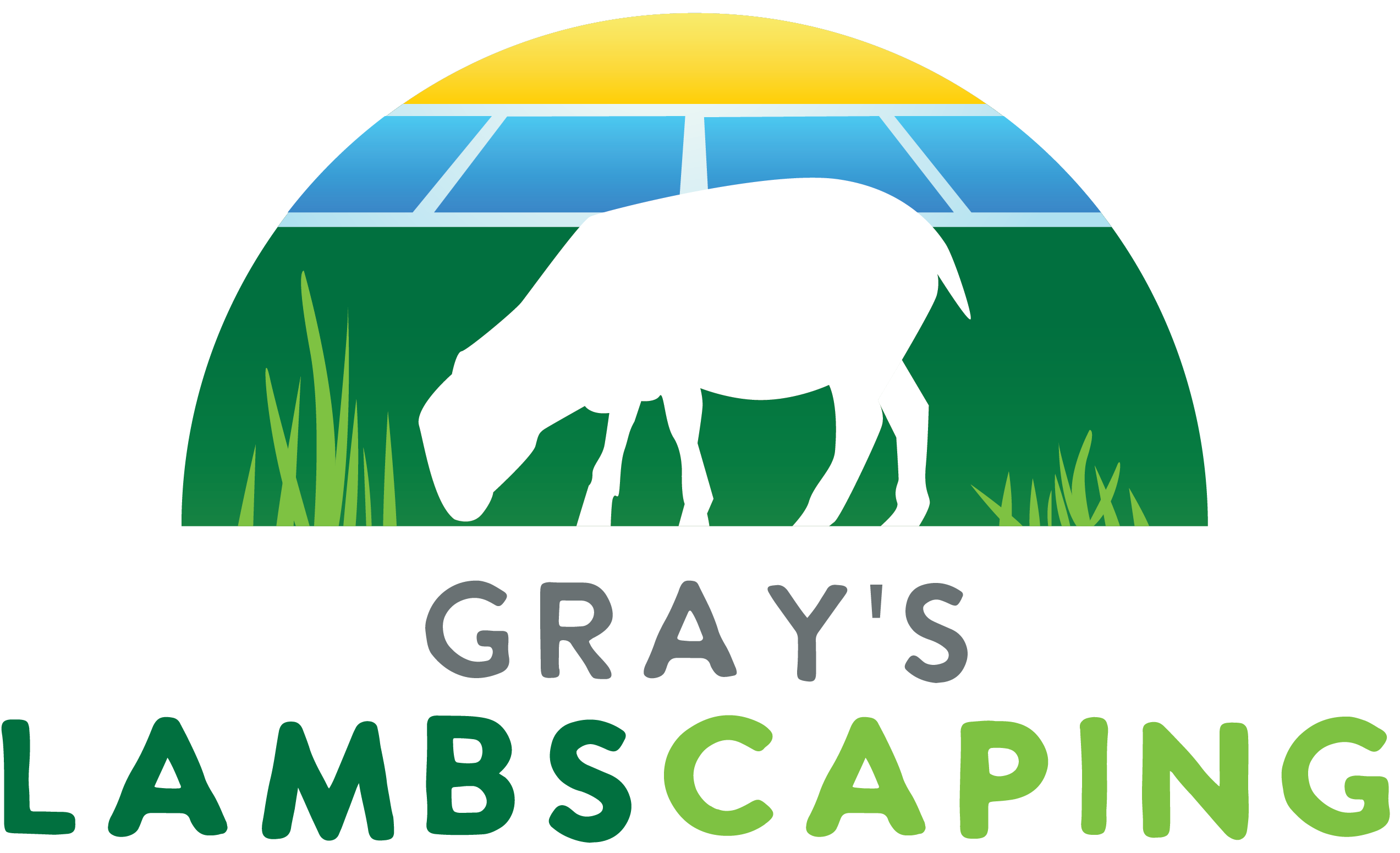7 Common Solar Grazing Myths and Misconceptions
By: Jess Gray · Feb. 15, 2024 · 5 min
Solar grazing, while offering numerous benefits for renewable energy production and sustainable agriculture, is often misunderstood. Implementing this practice involves navigating various obstacles, from logistical issues to ecological considerations. However, with innovative solutions, qualified solar grazing operations, and strategic planning, these challenges can be easily addressed, paving the way for the scalability and sustainability of solar grazing.

Myth #1: Sheep Could Damage Solar Infrastructure
After two years of managing solar grazing sites, we have never had a sheep damage a solar panel. Sheep – as opposed to cows or goats – are less likely to injure panels or cause equipment damage. They don’t rub on panels or chew the lines.
Myth #2: The Animals Are Left Alone
Ensuring the welfare of the sheep, including their health, safety, and nutrition, is our top priority. We invest in regular health check-ups, top-quality mineral supplements, fresh water sources, and adequate infrastructure to ensure the welfare of our flock. We monitor our sheep with at least two trained shepherds per site and employ rotational grazing practices to maintain herd health and prevent overgrazing.
Myth #3: Agrivoltaics Regulations Are Too Strict
Zoning laws, agricultural regulations, and solar industry standards can challenge integrating solar energy production with livestock grazing. We work closely with local authorities, agricultural agencies, and solar industry bodies to help our clients navigate regulatory hurdles. The earlier we start promoting a solar site and gaining stakeholder buy-in, the better. Engaging in dialogue and advocacy can also lead to more supportive policies for solar grazing.
Myth #4: The Sheep Will Eat All Of The Plants, Destroying Habitats
Sheep actually leave the land in better condition than they found it, often contributing to a greater density and variety of healthy biomass due to increased soil nutrients. However, if solar grazers don’t properly rotate their flocks regularly; there is a risk of overgrazing, which could decrease plant diversity and degrade soil health. We always implement rotational grazing and cross-fencing strategies and biodiversity enhancement programs, such as planting native species or creating habitat areas within solar farms, which can mitigate the risks of overgrazing and support ecosystem health.
Myth #5: Solar Farms Will Reduce My Property Value
The belief that solar farms significantly reduce nearby property values is largely a myth. Extensive research, including a 2023 study by the Lawrence Berkeley National Laboratory examining over 1.8 million home sales across six states, found a minimal impact on property values. The researchers found that homes within a quarter-mile of solar farms experienced a modest average decline of 2.3% and no significant effects beyond a mile radius of the solar farm. This data was echoed in another research published in the journal Energy Policy, which confirmed a slight average decrease in property values (around 1.5% to 2.3%) for homes near utility-scale solar projects. Both studies underscore that any negative impacts on property values are significantly smaller than many might fear and are highly context-dependent, varying by factors such as the location’s urbanicity, the size of the solar farm, and the previous land use of the site. These insights collectively debunk the myth that solar farms broadly and significantly reduce property values, suggesting that any effects are limited, localized, and often outweighed by the broader benefits of clean energy and potential financial incentives for homeowners and communities.
Myth #6: Solar Farms Are Noisy
Solar farms primarily consist of photovoltaic (PV) panels that convert sunlight into electricity, which occurs silently. The inverters and transformers are the only components that might produce some sound, typically enclosed in structures designed to minimize noise. Any noise generated by these components is minimal and hardly noticeable, especially compared to the ambient noise levels in most rural or semi-urban settings where solar farms are usually situated. Studies and reports from operational solar farms have consistently shown that noise levels at the boundary of solar installations are well within the thresholds considered acceptable by residential standards. In fact, the noise level near a solar farm is often compared to the low hum one might hear from a refrigerator or a distant air conditioning unit—barely perceptible and certainly not disruptive to daily life.
Future Outlook and Potential for Solar Grazing Scalability
Despite numerous solar grazing myths and misconceptions, the future outlook for our field looks promising, with potential for significant scalability and sustainability. As renewable energy targets expand globally, the demand for innovative land management solutions like solar grazing will likely increase. Agrivoltaics aligns with environmental sustainability goals and offers a viable economic model for farmers and solar operators.
To scale solar grazing, stakeholders must invest in more research and development to refine grazing practices, optimize solar farm designs for cohabitation with livestock, and develop best practices for managing the welfare of grazing animals in solar farms. Technological advancements, such as remote monitoring systems for solar panel performance and animal health, can further enhance the efficiency and effectiveness of solar grazing.
Additionally, increased awareness and education about the benefits of solar grazing can foster broader acceptance and adoption of this practice. Building partnerships between the renewable energy sector, agricultural communities, environmental organizations, and policymakers can drive the development of supportive frameworks and incentives, facilitating the growth and sustainability of solar grazing.
With continued innovation, collaboration, and supportive policies, solar grazing has the potential to become a cornerstone practice in the intersection of renewable energy and sustainable agriculture, contributing to a greener and more sustainable future. At Gray’s LAMBscaping, we embrace innovative approaches to solar grazing. We are continually looking ahead to future advances in agrivoltaics to enhance sustainability and efficiency in integrating livestock management with renewable energy production.
About Jess
Jess Gray is the CEO of Gray’s LAMBscaping, LLC, overseeing the company’s financial management, policy development, logistics, and reporting. As a 2023 Nuffield International Agricultural Scholar, Gray has represented her company in over half a dozen countries, focusing her research on integrating solar energy with livestock grazing.



